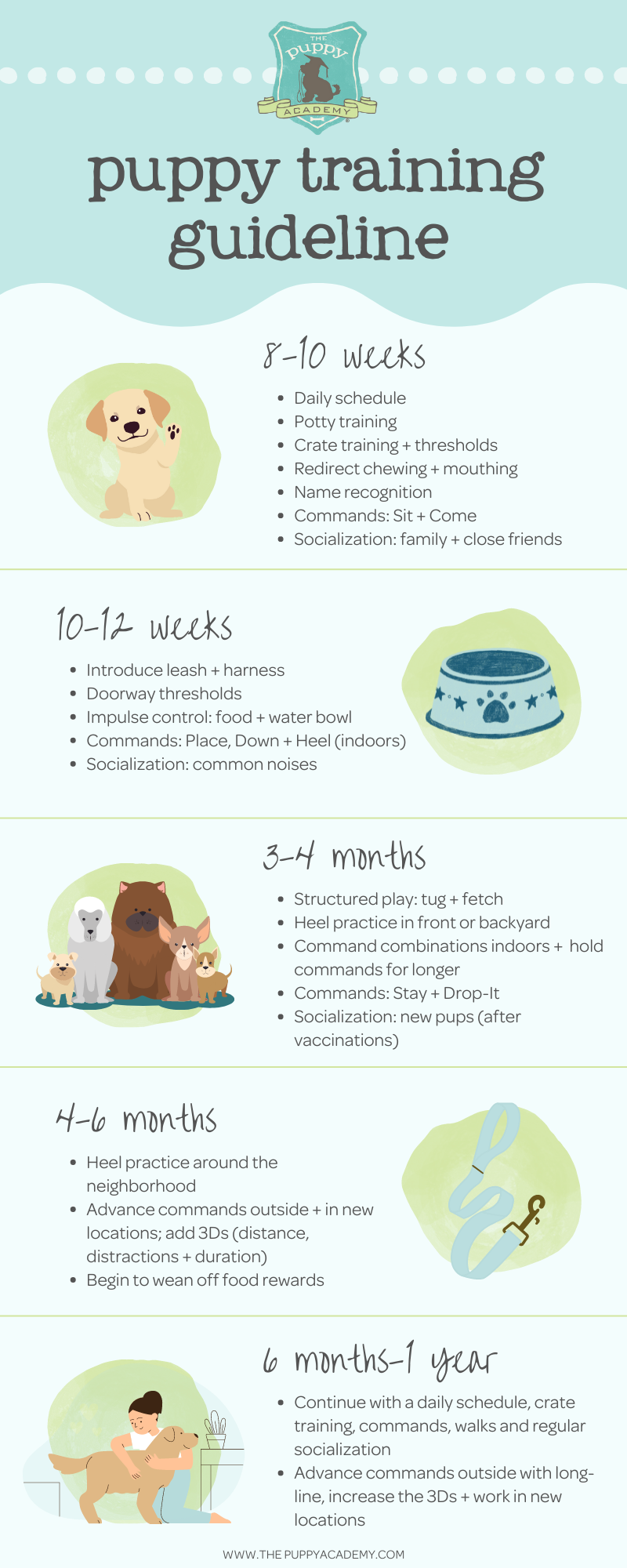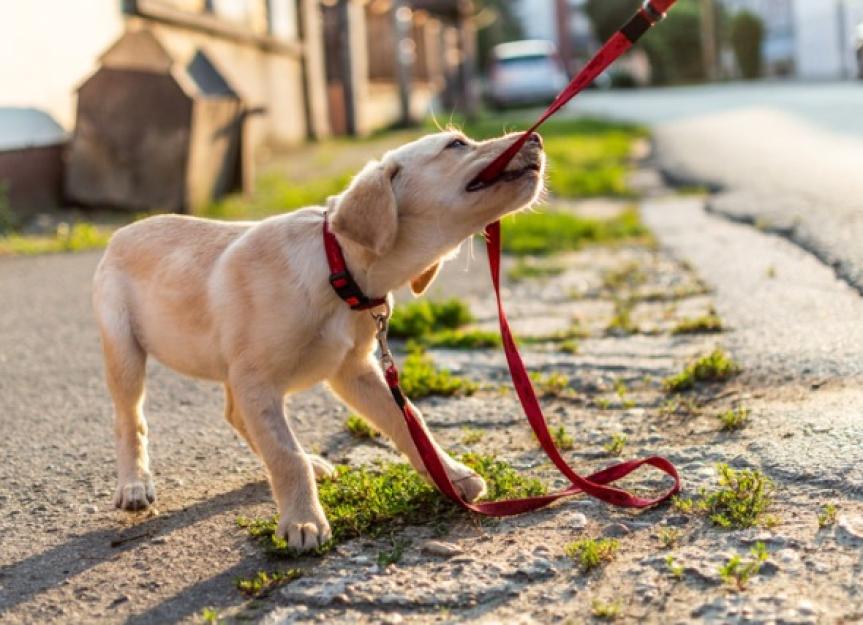Top Young Puppy Training Techniques to Make Sure a Mannerly Pet
Effective pup training is critical for growing a well-behaved companion, and various methods can dramatically influence a pet dog's development. Among these, favorable reinforcement sticks out as a fundamental technique, promoting depend on and motivating desirable behaviors. Uniformity in commands and very early socialization are similarly essential, preparing for a well-adjusted family pet. In addition, the functions of crate training and leash etiquette can not be overlooked. As we explore these methods further, it comes to be clear that the success of puppy training rests on a combination of approaches that can change your pet's habits in remarkable means.
Favorable Support Strategies
Utilizing positive support methods is important for effective pup training, as it encourages desired habits via incentives as opposed to penalty. This technique maximizes the natural discovering procedures of pets, enhancing excellent behavior by supplying immediate and tangible incentives, such as deals with, appreciation, or playtime. By linking favorable outcomes with certain activities, puppies are most likely to duplicate those behaviors in the future.
Effective favorable reinforcement involves timing and consistency. Benefits ought to be provided immediately after the preferred actions happens to develop a clear link in the pup's mind. Furthermore, varying the sorts of rewards can preserve a puppy's rate of interest and motivation throughout the training process. Some young puppies might respond much better to verbal appreciation while others might favor a favored plaything or treat.

Uniformity in Educating Commands
Maintaining uniformity in training commands is crucial for reinforcing the lessons found out via positive reinforcement techniques. Canines grow on regular and predictability, so making use of the exact same verbal commands and hand signals for specific behaviors is vital. This harmony helps young puppies recognize what is expected of them, lowering confusion and aggravation for both the trainer and the pet.

Timing also plays a considerable duty in uniformity. Commands should be delivered immediately throughout training sessions and complied with instantly by favorable support, such as treats or praise. This instant action helps solidify the organization between the command and the preferred actions.
Integrating consistency right into training sessions will produce a stable discovering environment, advertising quicker proficiency of commands. Inevitably, a well-structured strategy cultivates a solid bond in between the pup and its proprietor, resulting in an extra well-behaved and loyal pet.
Socializing With Various Other Animals
Socialization with other pet dogs is essential for a pup's development, as it aids them discover ideal actions and interaction abilities in varied social contexts. Early interactions with different animals can substantially influence a puppy's personality and flexibility in various situations. When pups are exposed to a selection of pet dogs, they come to be much more positive and less afraid, which can avoid prospective behavioral concerns later in life.

Furthermore, observing body movement during interactions is crucial. Show your puppy to identify signals from other pets, such as indicators of playfulness or pain, promoting common regard and understanding. Routine socializing not only improves your young puppy's social abilities yet also adds to their overall health, developing a much more harmonious living environment. Finally, focusing on interactions with other family pets will generate a well-rounded and socially adept pet.
Dog Crate Training Benefits
Acknowledging the numerous advantages of crate training can significantly boost both the puppy's and owner's experience. Crate training provides a secure and safe environment for pups, guaranteeing they feel protected when left alone. This complacency can substantially lower anxiety and anxiety degrees for both the owner and the animal.
Additionally, crates offer as a useful house-breaking device. Puppies normally avoid soiling their resting area, thus encouraging them to hold their bladder until they are let outside. This instinct can accelerate the housebreaking procedure, fostering excellent habits beforehand.
Crate training also assists in taking care of a pup's behavior when unsupervised. By supplying a marked space, proprietors can prevent devastating actions, such as eating on furnishings or getting involved in hazardous compounds. In addition, crates can be valuable during travel, supplying a familiar room that can assist relax a young puppy in brand-new settings.
Last but not least, developing a cage routine motivates freedom, allowing puppies to find out just how to be alone without fear. In general, pet crate training is an efficient technique for promoting serenity, technique, and safety and security, resulting in a well-adjusted, mannerly pet.
Leash Training Fundamentals
Leash training is an essential aspect of responsible family pet possession that guarantees a risk-free and delightful strolling experience for navigate here both the pup and its proprietor. the original source Appropriate leash training begins early, preferably throughout the puppy's socialization period. This training helps establish excellent routines and advertises favorable habits when out in public.
To start, choose a comfy collar or harness that fits your young puppy well. Attach a tough chain, ensuring it is not also long, as this can lead to drawing and unpredictable actions. Start in a peaceful environment to lessen disturbances and progressively introduce your pup to new environments.
Use favorable reinforcement techniques, such as treats and praise, to motivate your puppy to stroll close to you. Quit strolling and wait for them to return to your side before proceeding if your pup pulls. This shows them that pulling will certainly not produce ahead movement. Uniformity is essential; practice consistently and stay client, as mastery requires time.
Furthermore, include short training sessions with fun distractions to develop your pup's focus. With devotion and perseverance, chain training will result in an accommodating friend, making strolls delightful for both the proprietor and the young puppy.
Verdict
In verdict, utilizing reliable puppy training techniques is important for creating a well-behaved pet dog. Favorable reinforcement fosters count on and urges wanted actions, while uniformity in commands aids in comprehension. Socializing with other animals boosts flexibility and social skills, and pet crate training supplies a safe environment that sustains house-training efforts. Leash training develops appropriate walking practices, adding to delightful outings. In general, these approaches jointly promote a harmonious relationship in between pups and their proprietors.
As we explore these techniques better, it ends up being clear that the success of pup training pivots on a combination of techniques that can transform your animal's actions in impressive ways.
Using positive support methods is essential for efficient young puppy training, as it urges desired habits with incentives rather than penalty.Crate training also helps in managing a pup's actions when not being watched.Leash training is a basic facet of accountable family pet possession that makes certain a pleasurable and secure walking experience for both the young puppy and its proprietor.In final thought, employing effective puppy training strategies is critical for developing a well-behaved pet.